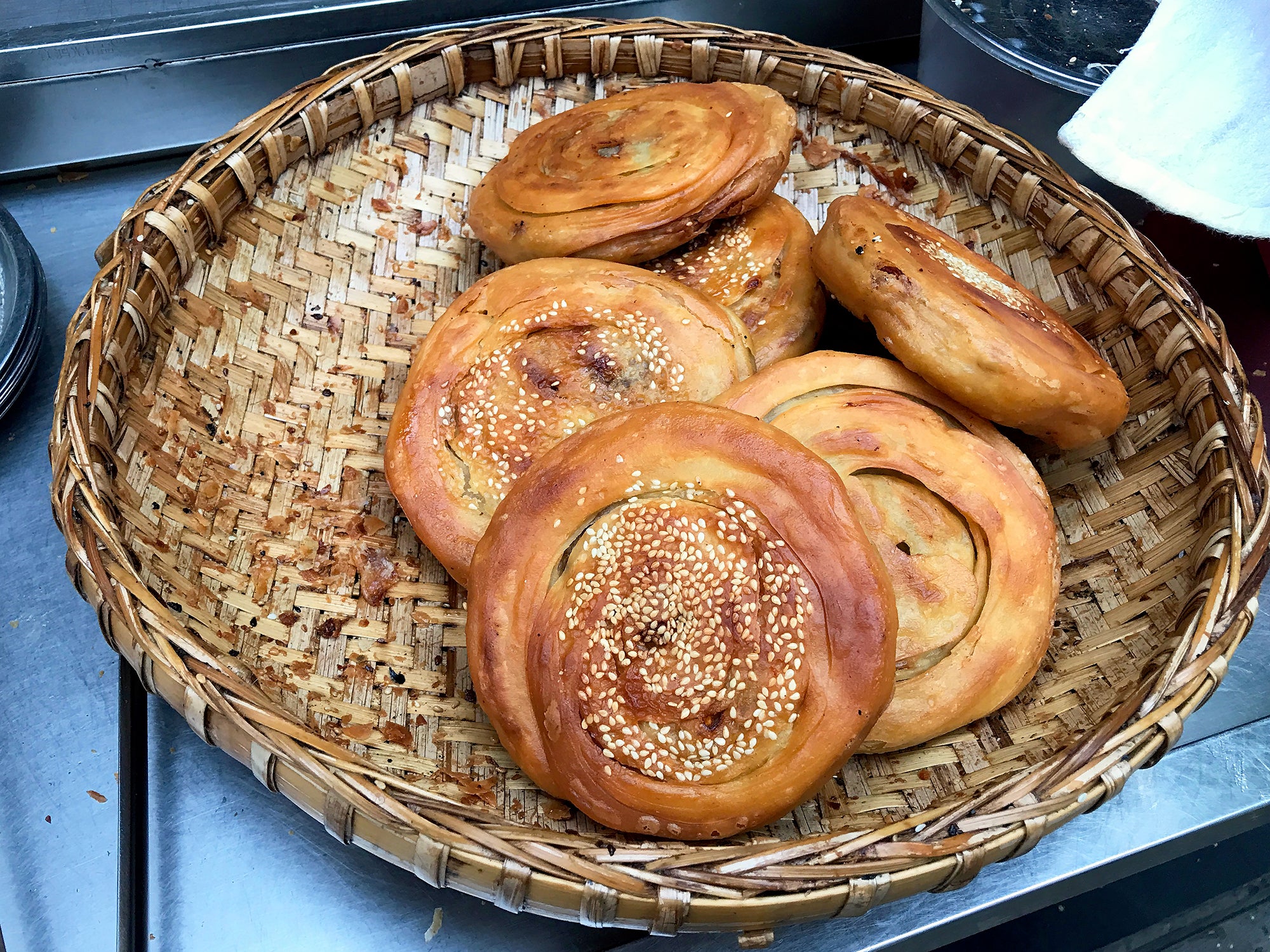|
We've been eagerly awaiting this book (which was simultaneously published in the U.K. this week) by British-Chinese photographer and author Michael Zee.
Like many cookbooks, Zao Fan has recipes, context, well-researched history and enticing photographs of the dishes and people who make them. Unlike most cookbooks, each recipe also includes a video clip of those expert cooks rolling, filling, shaping, frying, composing, pulling, steaming and stir-frying. It's one thing to read how someone folds a dumpling or composes a noodle bowl, it's quite another thing to look over their shoulder as you attempt to make it yourself. And all you have to do is point your phone camera at the QR code that comes with the recipe to see quick video tutorials for each one.
Besides the practical benefits of the video, there are also the emotional ones as the video takes you back to the time when you too stood in line at a street stall in China to get a shengjianbao or jianbing or a bowl of Xinjiang breakfast noodles. Or perhaps it will take you forward in time to when you will finally be able to do so.
If you have your own Chinese breakfast memory, I bet you'll find the video and recipe here. If you don't have that memory, you may be surprised to learn that breakfast in China includes not only dumplings, bao and all manner of bread and dough snacks but also noodles, soups, congee, tofu, egg dishes, pickles and more. Breakfast is the beating heart of street food in China, and it is palpable in Zao Fan.
Michael Zee grew up in Liverpool, England, working in his dad's Chinese restaurants before studying photography at university. He eventually launched the Instagram-famous site SymmetryBreakfast, which led to a cookbook of the same name. In 2017 he moved to his grandfather's old stomping grounds of Shanghai and spent five years researching and documenting a vast array of breakfast foods from the shops and stalls of China.
Here is Michael quoted from the book:
"Ultimately, I want you to use this book as a multi-functional tool. Take it as a jumping off point to perhaps one day go and visit these people in the photos and taste their food for real (they are wonderfully friendly and kind cooks and hosts). Use it as an enhanced instruction manual to bridge the gap in knowledge between descriptor and practice, the word and the hand. Or, read it as pure entertainment – just sit in an armchair and explore one of the greatest cuisines in the world, through the greatest meal of the day."
This book uses almost every pantry item in The Mala Market:
- Build an instant primo Chinese pantry with one click here.
- Or start with a complete Sichuan pantry here.
|

